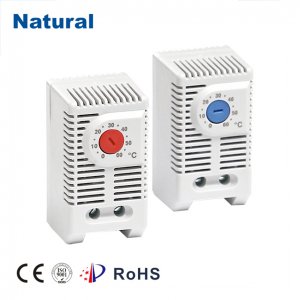In modern living and working spaces, maintaining optimal environmental conditions is essential for the comfort and well-being of occupants. Among the crucial factors that contribute to a comfortable indoor environment are temperature and humidity. A temperature controller, often used in conjunction with a humidity controller, plays a vital role in regulating these factors, ensuring a balanced and pleasant atmosphere.

Temperature control is not merely about maintaining a specific degree on a thermostat. It involves a dynamic interplay between heating and cooling mechanisms to achieve a stable and desired temperature. This is particularly important in regions with varying seasons, where external temperature fluctuations can greatly affect indoor comfort. A temperature controller employs sensors to constantly monitor the ambient temperature and triggers heating or cooling systems as needed. For instance, during cold winter months, the controller activates the heating system to maintain a cozy indoor temperature, while in the scorching heat of summer, it engages the cooling system to bring relief. While temperature control is pivotal, it is incomplete without considering humidity levels. Humidity, the amount of moisture present in the air, significantly impacts the perceived comfort. High humidity can lead to a clammy and stifling environment, while low humidity can cause discomfort through dry skin and irritated respiratory passages. A humidity controller complements the temperature controller by ensuring that the humidity levels are within an optimal range. By employing moisture sensors, the controller activates humidifiers to add moisture to the air in dry conditions or dehumidifiers to reduce excess moisture when the air is too damp. The integration of both temperature and humidity controllers offers a holistic approach to indoor comfort. For instance, during the winter, the temperature controller maintains warmth, and the humidity controller ensures that the air doesn’t become overly dry due to heating systems. Similarly, in hot and humid climates, the temperature controller keeps the environment cool, and the humidity controller prevents excessive stickiness. This dual control approach enhances the overall comfort and well-being of the occupants. In addition to individual comfort, temperature and humidity control plays a crucial role in various industries. In sectors like pharmaceuticals, electronics manufacturing, and food storage, maintaining specific temperature and humidity conditions is vital to ensure product quality and prevent spoilage. Research laboratories also heavily rely on precise environmental control to safeguard experiments and samples from potential damage. Advancements in technology have led to the development of smart temperature and humidity controllers. These controllers can be programmed and monitored remotely through smartphones or computers, allowing users to adjust settings even when they are not on-site. This is particularly beneficial for businesses with multiple locations or homeowners who travel frequently. In conclusion, temperature and humidity controllers are indispensable tools for creating a comfortable and healthy indoor environment. By working in tandem, these controllers ensure that both temperature and moisture levels remain within optimal ranges. This not only enhances personal comfort but also has far-reaching implications in various industries. As technology continues to evolve, we can expect even more sophisticated and efficient controllers that contribute to better living and working conditions.